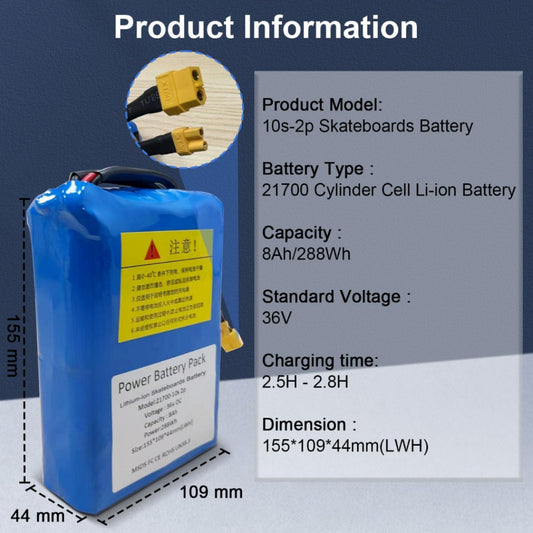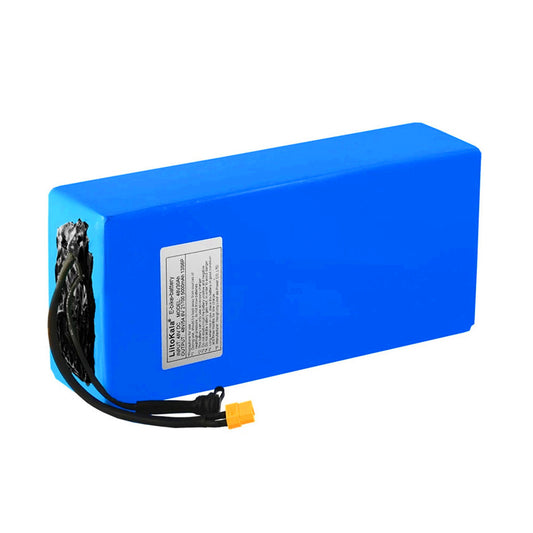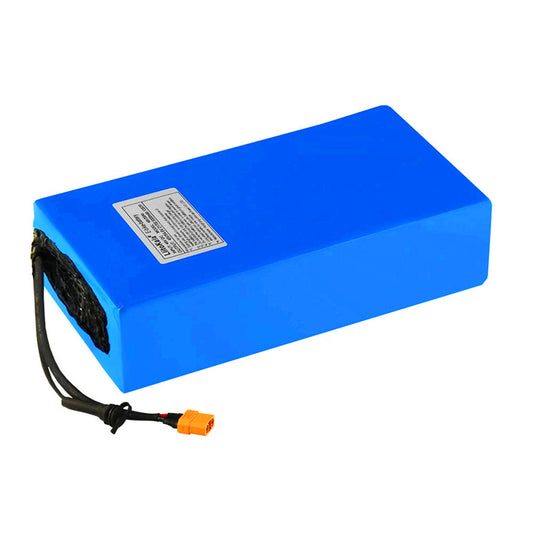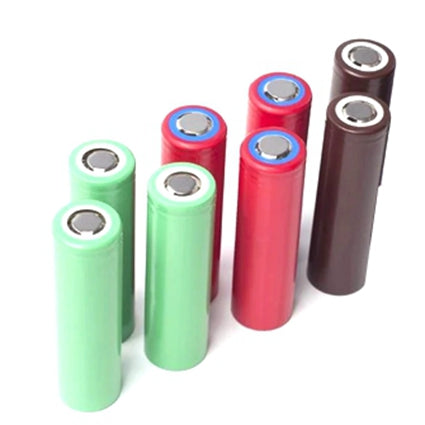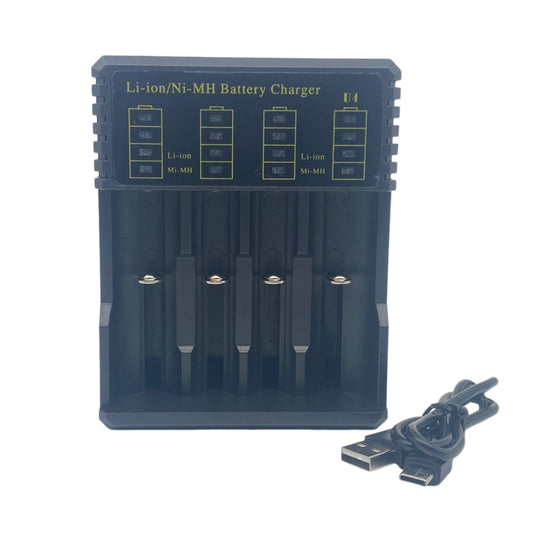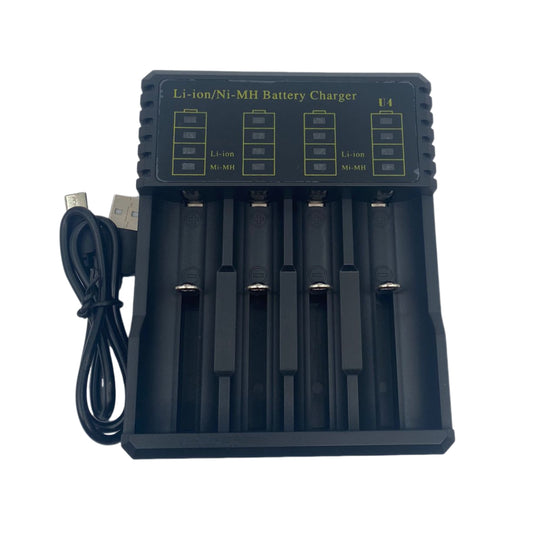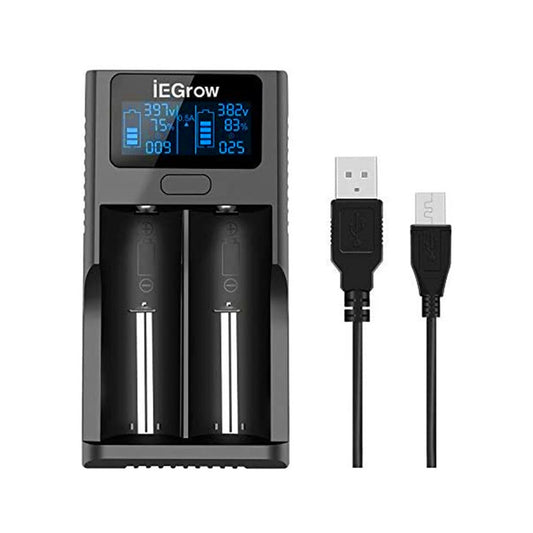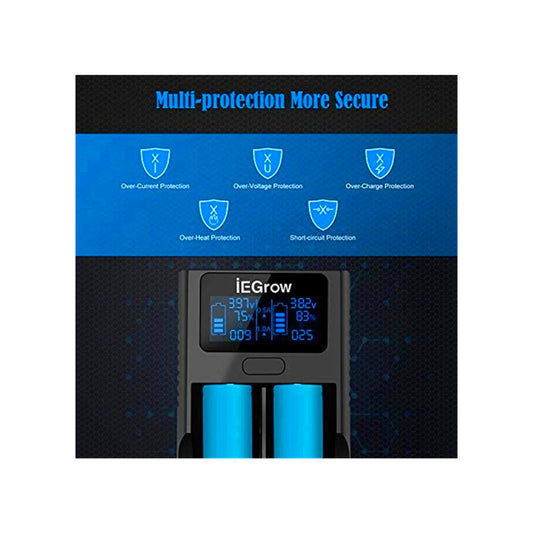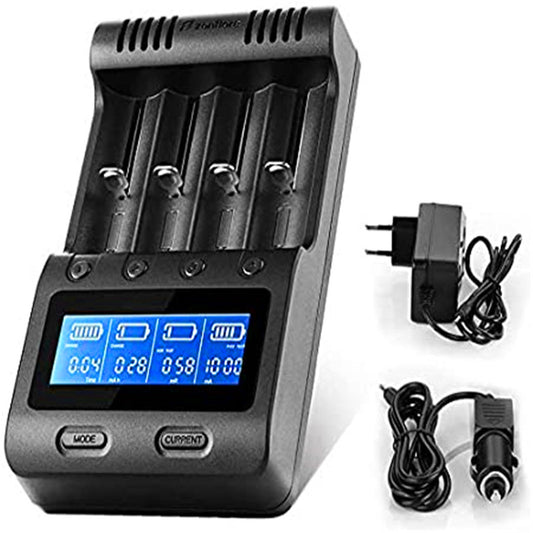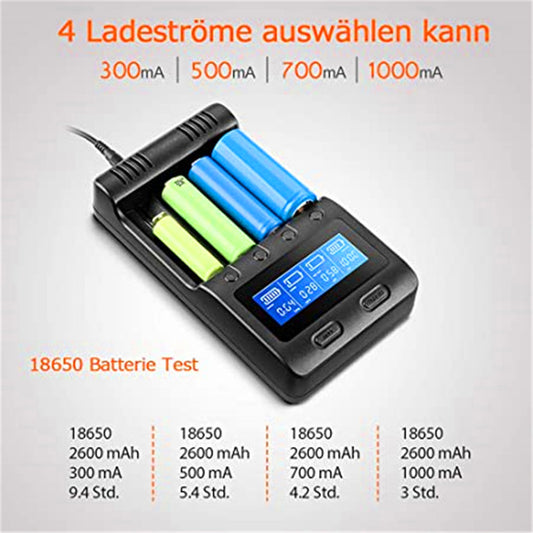Choosing the right battery for your devices can make a big difference in how well they perform and how long they last. Nickel-Metal Hydride (NiMH) and Lithium-Ion (Li-ion) batteries are two popular choices for gadgets, tools, or household items, each with its own benefits and drawbacks. This article will compare NiMH and Li-ion batteries in key features to help you decide which battery type is right for you.
What is a NiMH Battery?
Nickel-Metal Hydride (NiMH) batteries get their name from the materials used in their construction. The "Nickel" refers to the nickel oxide hydroxide used as the positive electrode, and "Metal Hydride" refers to the hydrogen-absorbing alloy used as the negative electrode. NiMH batteries charge and discharge through a chemical reaction that occurs between the nickel oxide hydroxide and the metal hydride.
During charging, electrical energy is applied to the rechargeable battery, causing the nickel oxide hydroxide to become nickel hydroxide and the metal hydride to absorb hydrogen, storing energy.
During discharge, this process is reversed. The nickel hydroxide returns to nickel oxide hydroxide, and the hydrogen is released from the metal hydride, producing electrical energy to power your devices.
This cycle of charging and discharging can be repeated many times, making NiMH rechargeable batteries a durable and reusable power source.
What is a Lithium-Ion Battery?
Lithium-Ion (Li-ion) batteries are named after the lithium ions that move between the electrodes during charging and discharging. The negative electrode, or anode, is usually made of graphite while the positive electrode,or cathode, is typically made of lithium cobalt oxide (LCO), lithium iron phosphate (LFP), lithium nickel manganese cobalt oxide (NMC), or lithium nickel cobalt aluminum oxide (NCA), each with its own specific advantages. Li-ion rechargeable batteries charge and discharge through the movement of lithium ions between the cathode and anode. During charging, electrical energy is applied to the battery, causing lithium-ions to move from the cathode to the anode, where they are stored. During discharge, this process is reversed: the lithium ions move back from the anode to the cathode, generating electrical energy that powers your devices. This process can be repeated many times.

Differences Between NiMH Battery and Lihitium-Ion Battery
Energy Density and Capacity
Lithium-Ion batteries generally offer higher energy density compared to NiMH batteries. Li-ion batteries can have an energy density of around 150-200 Wh/kg, while NiMH batteries usually range from 60-120 Wh/kg. This means Lithium rechargeable batteries can store more energy in the same amount of space, providing longer usage times for devices.
Cycle Life
Li-ion batteries typically have a longer cycle life, often exceeding 500-1000 cycles, while NiMH batteries usually last around 300-500 cycles.
Voltage
NiMH batteries typically have a nominal voltage of 1.2 volts per cell. In contrast, Lithium-Ion batteries have a higher nominal voltage, usually around 3.7 volts per cell. Thta is Lithium-Ion batteries can deliver more power per cell, making them more suitable for high-performance applications. However, the devices designed for NiMH batteries might not be directly compatible with Lithium-Ion rechargeable batteries without modifications.
Self-Discharge Rate
NiMH batteries have a higher self-discharge rate compared to Li-ion batteries. NiMH batteries can lose up to 30% of their charge per month if left unused, whereas Li-ion rechargeable batteries typically lose only about 1-5% per month.
Weight and Size
Lithium batteries are lighter and more compact than NiMH batteries for the same capacity. This makes Li-ion batteries more suitable for portable devices which require lighter weight and smaller size.
Cost
The initial cost of Li-ion batteries is typically higher than that of NiMH batteries. NiMH batteries generally cost around $2 to $5 per cell, while Lithium batteries can range from $5 to $10 per cell. That is Li-ion batteries can be approximately 2 to 3 times more expensive upfront. However, due to their higher energy density, longer cycle life, and lower self-discharge rate, Li-ion batteries can be more cost-effective over time, providing better value and performance for longer periods.
Environmental Impact
The main components of NiMH batteries are nickel and a hydrogen-absorbing alloy, which are less harmful to the environment. Lithium-ion batteries, on the other hand, contain heavy metals materials such as cobalt, nickel, and lithium, which can be harmful if not disposed of properly. Cobalt and nickel, in particular, are toxic and can cause environmental damage if they leach into the soil and water. So Ni-MH batteries are generally considered more environmentally friendly than lithium-ion batteries.
Memory Effect
The memory effect occurs in NiMH batteries due to the formation of crystalline structures on the battery electrodes when they are repeatedly recharged after only being partially discharged. This crystallization reduces the battery's capacity over time. Lithium-ion rechargeable batteries do not experience this effect because their chemistry and structure won't form these crystals.
Safety Concerns
NiMH batteries do not contain highly reactive materials and are generally safer and less prone to overheating. Lithium-ion batteries require built-in safety mechanisms to prevent overcharging, overheating, and potential explosions due to the presence of flammable electrolyte and the high energy density of lithium compounds. This makes NiMH batteries more stable and less likely to cause safety issues under normal use conditions.
Comparison Chart of NiMH Battery and Lithium-Ion Battery
| Feature | NiMH Battery | Lithium-Ion Battery |
| Energy Density | 60-120 Wh/kg | 150-200 Wh/kg |
| Raw Material | Nickel oxide, metal hydride | Lithium compounds |
| Cycle Life | 300-500 cycles | 500-1000+ cycles |
| Self-Discharge Rate | Up to 30% per month | 1-5% per month |
| Voltage | 1.2V per cell | 3.7V per cell |
| Weight and Size | Heavier and bulkier | Lighter and more compact |
| Cost | Lower initial cost | Higher initial cost |
| Environmental Impact | Less toxic | Requires careful recycling |
| Memory Effect | Prone to memory effect | No memory effect |
| Safety | Safer, less prone to overheating | Requires safety mechanisms |
| Applications | Household items, power tools | Portable electronics, EVs |
Which is Better, NiMH or Lithium-Ion Battery?
You should choose different rechargeable batteries based on your actual needs, including costs, safety and efficiency.Lithium-Ion batteries are better for most high-energy applications due to their higher energy density and longer cycle life. They are commonly used as electric scooter battery, smartphones, laptops, electric vehicles, and other portable electronics.However, NiMH batteries can be a better choice for applications where cost and safety are prioritized, such as household items, remote controls, cordless phones, power tools, and some medical devices.We hope this article has been helpful in understanding the differences between NiMH and Lithium-Ion batteries. At BatteryInt, we offer a wide range of NiMH battery packs and Lithium-Ion battery sales to suit your needs. Explore our battery on sales to keep your devices running efficiently and effectively.

FAQ for NiMH Batteries and Lithium-Ion Batteries
Can you replace NiMH batteries with lithium batteries?
Yes, in many cases, you can replace NiMH batteries with Lithium-Ion batteries, but it depends on the device. Lithium-Ion batteries offer higher energy density and longer cycle life, making them a suitable upgrade. However, it's crucial to check the device's specifications and compatibility, as the voltage and charging requirements differ between NiMH and Lithium-Ion batteries. Always ensure that the replacement battery matches the device's voltage and size requirements to avoid any damage or safety issues.
Can I use a NiMH charger to charge lithium batteries?
No, you should not use a NiMH charger to charge Lithium-Ion batteries. NiMH and Lithium-Ion batteries have different charging requirements and chemistries. Using a NiMH charger for Lithium-Ion batteries can result in improper charging, which can lead to overheating, reduced battery life, or even potential safety hazards such as fires or explosions. Always use a charger specifically designed for Lithium-Ion batteries to ensure safe and efficient charging.
Related Reading:
26650 vs 18650 Batteries: A Comprehensive Comparison Guide



